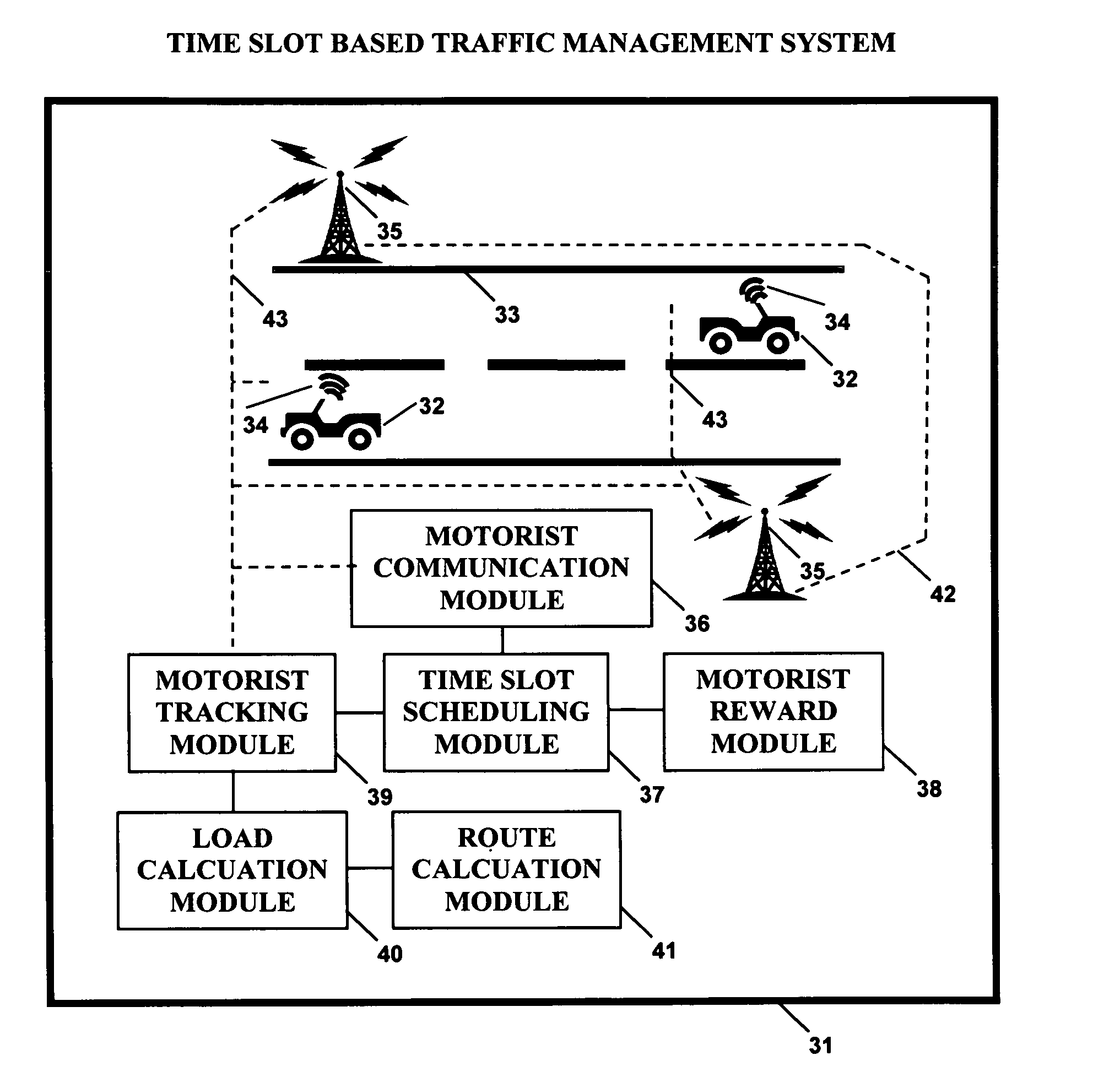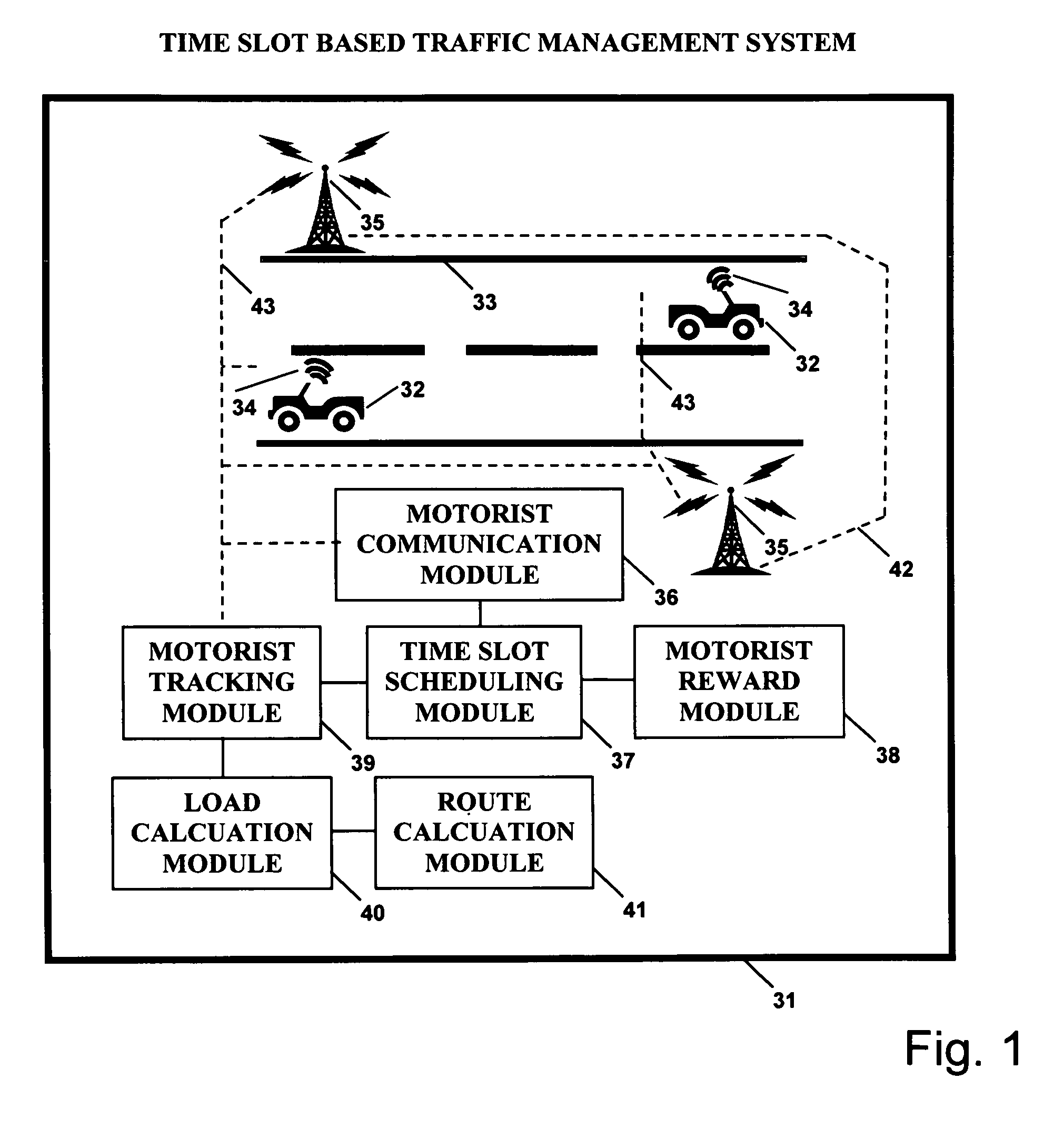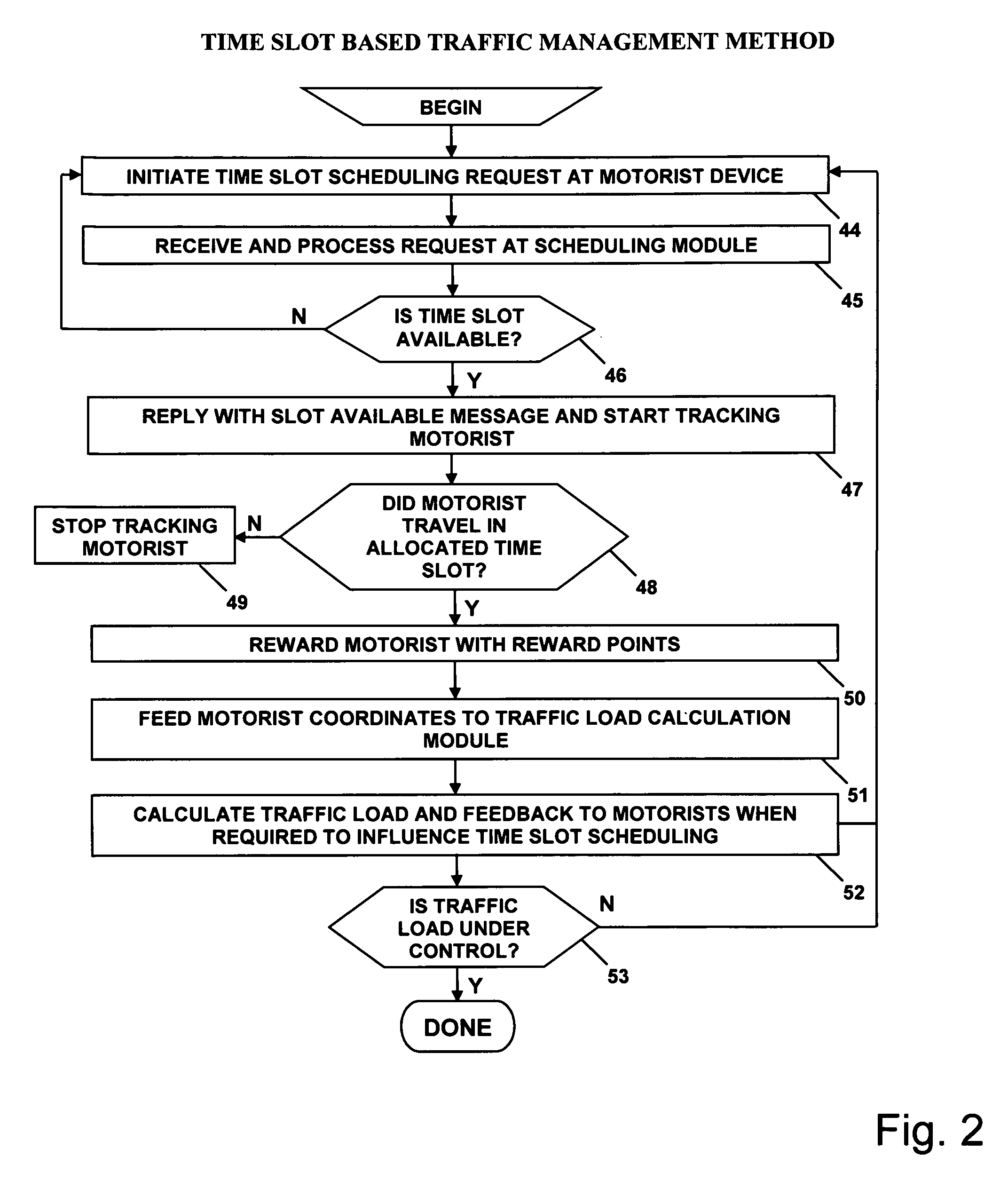Time slot based roadway traffic management system
a technology of time slot and traffic management system, applied in the direction of testing circuits, navigation instruments, instruments, etc., can solve the problems of insufficient control of roadway entry, traffic backup, and system that is in use today
- Summary
- Abstract
- Description
- Claims
- Application Information
AI Technical Summary
Benefits of technology
Problems solved by technology
Method used
Image
Examples
Embodiment Construction
[0071]In the following description, traffic management system of present invention is described. Then steps using this system are described
[0072]FIG. 1 shows traffic management system of present invention 31 that enables a motorist 32 to schedule time slots for travel on a desired roadway 33.
[0073]Traffic management system 31 is made up of several functional modules including a cellular mobile device associated with a motorist 34, a cellular base station for a motorist to communicate with cellular network 35, a motorist communication module 36 to enable communication between motorist 32 and a time slot scheduling module 37, a motorist reward module 38, a motorist tracking module 39, a load calculation module 40, and a route calculation module 41. Each of these modules can be a combination of software and hardware systems.
[0074]Motorist 32 requests a time slot for travel using communication module 36 that directs the request to time slot scheduling module 37, which then allocates ava...
PUM
 Login to View More
Login to View More Abstract
Description
Claims
Application Information
 Login to View More
Login to View More - R&D
- Intellectual Property
- Life Sciences
- Materials
- Tech Scout
- Unparalleled Data Quality
- Higher Quality Content
- 60% Fewer Hallucinations
Browse by: Latest US Patents, China's latest patents, Technical Efficacy Thesaurus, Application Domain, Technology Topic, Popular Technical Reports.
© 2025 PatSnap. All rights reserved.Legal|Privacy policy|Modern Slavery Act Transparency Statement|Sitemap|About US| Contact US: help@patsnap.com



